When I worked as Supply Chain Director in Procter & Gamble, every year we completed a loss analysis. To do that, we picked a specific skin-care product and leveraged a tool called value-stream-mapping to map out the whole supply chain for each of the components and ingredients on a large white-board. The captured flow could lead back more than 12 months, when some of the raw materials were prefabricated.
Then, we looked at all the steps in the supply chain which actually generated value. For example, when we mixed the ingredients, filled the jar, put a label on, and added a cap to close the jar. You can imagine the actual value-creation-time was only a few minutes, whereas there were weeks and months lost in waiting, transportation, as well as other non-value-added movements.

We then mapped out a perfect state, where we radically shortened and simplified the supply chain. Whilst we were never able to reach that perfect state, we were able to cut out substantial losses, which saved time and money AND improved customer service.
I love the concept of value stream mapping and believe it can be wonderfully applied to our professional and personal lives as well. Here is a beautiful example of how it changed someone’s career.
Hugo was in his late thirties, an Operations Director in a medium-sized company. We had worked together for several months and progressed well in our coaching when, during the mid-term review, his manager asked us to clarify whether Hugo should develop his career further as a generalist or a specialist.
Exploring this question, Hugo mentioned it was absolutely critical for him to maintain a high level of passion for his work, whatever he would do in the future. As a homework assignment, I asked him to describe what a perfect workweek would look like.
But he came back with an even more profound insight.
Over the weekend, he spoke to his wife, who mentioned something very wise. She asked Hugo: “Do you remember when you worked in business consulting? You went to Germany and pitched your creative solution for how this car company could reduce their waste? I still recall when you went out in the morning, you had shiny eyes. And when you came back that evening, you had shiny eyes. I felt this was a time you were at your peak. Completely passionate.”
WOW! Of course, Hugo remembered that client. During that time, he had awakened at night and written down a revolutionary approach. He pitched it the next day, and then oversaw the successful implementation.
Drawing on this insight, we knew how to determine the perfect future career development for Hugo. Whatever it was, it had to create “shiny eyes.” Having established this, we could then test any future career opportunity and rate how it would score on Hugo’s “shiny eyes index.”
Asking Hugo to define more precisely what gave him shiny eyes, he described it as, “I want to develop revolutionary new ideas and put them into action!”
To create more shiny eyes in his current work, we had to find ways to pull Hugo out of daily operations, so he could “think out of the box” and develop ground-breaking new ideas. So, now, we are working on an organisational development program to transform Hugo’s organisation step by step towards a self-organised team. With that transition complete, he will have more capacity to create new ideas and implement them. This will not only give him more shiny eyes, but also make his boss happy, as Hugo drives innovative projects forward, delivering substantial commercial benefits for the company.
Similar to value stream mapping, we have identified in Hugo’s case what actually “creates value” for him. What gives him shiny eyes? Doing more of this also reduces the “losses and waste” in his daily work, whilst further expanding and leveraging his talents.

Speaking in terms of the Japanese concept of Ikigai, which translates as ‘a reason for being’, we have found the sweet spot for Hugo, where he does more of what (1) he loves doing, (2) he is very good at, (3) the world needs and (4) and he can get paid for.

My challenge to you today is simple. I want you to apply the concept of value stream mapping and shiny eyes to your life.
Similar to the exercise with the skin care jar and Hugo’s example, I want you to ask yourself, “What are the activities that really add value for me?
You can pick your career or any other are in your life, such as your health, your relationships, your hobbies, Me-Time … whatever area you would like to enhance.
What are the contributing factors in these areas which really add value for you? What gives you shiny eyes? Write it down and then start to cut out items that do not generate as much value or shiny eyes. It’s the path to getting more fulfilment, fun, health and joy out of your life, because you will be focusing on what really matters to you.
– Joerg

Leave a Reply